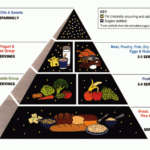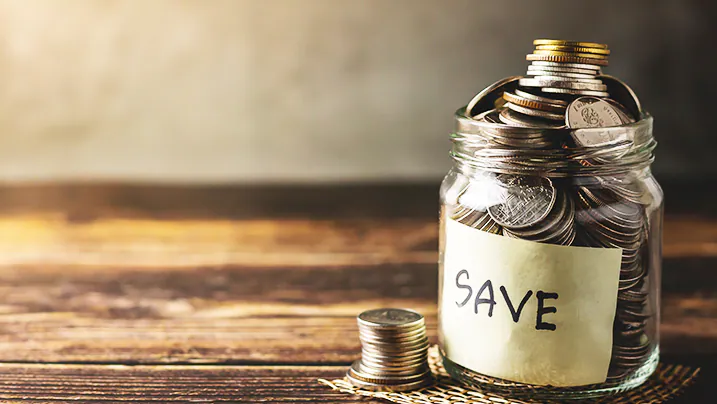A Plan For Spending and Saving Money
Getting serious about saving money starts with tracking your spending. Many bank statements incorporate categorized expense reports that can help you see your spending habits more clearly.
Having a plan for how you spend and save your money can make a big difference in the long run. Here are a few ways to get started:.
Set a Goal
Having specific savings goals can help you stick to a budget and achieve the financial stability you want. It’s also important to set a goal for an emergency fund, which can help you navigate unexpected expenses while still meeting your other financial goals.
Start by figuring out how much you spend each month. Record every expense, including coffee runs, household items and cash tips, using whatever method works best for you: rifling through your bank statements, a spreadsheet or a free budgeting app that connects to your banking and investment accounts. This will give you an accurate picture of your current spending habits, which you can then compare to your goals.
Then, divide your goals into short-term and long-term categories, according to the time frame you need. For example, a new smart phone may be something you can afford now or in a few months, but college funding for your children might take longer to save for.
Finally, determine how much you need to save each month to meet your goals. It may be helpful to establish a separate savings account for each goal, or to automate transfers between your checking and savings accounts so you don’t have to think about it as much. You can even set up recurring payments on your paycheck to automatically go toward your goals.
Track Your Expenses
Seeing where you spend your money is the first step to getting a handle on your spending habits. It can be surprising, motivating and a bit embarrassing at times, but it’s essential to your financial success. Gaining insight into your spending will help you identify and prioritize money goals, eliminate debt and save more for the things that matter to you.
There are many ways to track your expenses, so find the best one for you. There are apps for smartphones and tablets, downloadable spreadsheets, computer programs and even old-fashioned pencil and paper budgeting notebooks. Pick one that feels comfortable to use and stick with it. The more you practice tracking your expenses, the easier it will become.
Another method is to switch to cash only for expenses that are difficult to control using electronic payments. Label envelopes for each expense category – like groceries, eating out and entertainment – and put the amount of your budget for those categories in each envelope. When you go shopping, take the appropriate envelope with you and only purchase items from that category. At the end of each month, note how much is left in each envelope.
It’s also helpful to keep a list of all of your monthly bills and expense due dates, so you can see how much is coming in each month. If you have extra at the end of the month, make a habit of saving it for future expenses or to pay down debt.
Make a Budget
A budget is a tool that helps you manage your money. It can help you determine if you have enough to pay your necessary bills and to save for both short- and long-term goals. It can also help you avoid problems like overspending and going into debt.
To make a budget, first determine how much you bring in each month. This can be done with a spreadsheet or an online service or even just by using a notebook and pen. Next, figure out your fixed expenses, such as rent or mortgage, utilities and car payments. Then list your variable expenses, such as groceries, entertainment and gas. Finally, add a miscellaneous or “unexpected” category and a savings category.
When making your budget, be sure to consider debt payments and savings goals. Some people choose to use a 50/30/20 rule, where 50% of their income goes toward needs, 30% goes toward wants and 20% goes toward savings and paying down debt. This is a great starting point, but it’s important to customize your budget to your specific goals and spending habits.
Once you’ve created your budget, start tracking your expenses for at least three months. This can be done in a notebook, on a smartphone app or through a more automated method, such as setting up automatic transfers from your checking account to your savings account.
Make a Savings Goal
Once you’ve determined what you want to save money for, it’s important to set a savings goal. This step can be as simple as setting aside money for each item on a list or as involved as creating and using a budgeting tool like a spreadsheet or a free budgeting app. The key is to make sure that the goals you choose are realistic. It may also help to look at your spending habits to determine if there are areas where you can cut back in order to meet your savings goals.
Another consideration when making a savings goal is the time frame. A goal that’s five years away will have a different approach than a goal that’s within the next year. It’s a good idea to prioritize your savings goals, too, so that you’re able to reach them in the right amount of time.
After setting your savings goals, it’s helpful to create a savings account for the money you will be saving on a monthly basis. This will prevent the money from ending up in your chequing account where it can easily be spent or put into other investments that aren’t related to your financial goals. Also, a separate savings account will allow you to track your progress towards meeting your goals. And, if you receive a bonus or tax refund, it’s a good idea to transfer the money into your new savings account as soon as you get it so that it’s not immediately spent.







